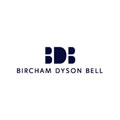Businessmen and women too often rely on crutches to get them through a presentation, pitch or meeting. Chief among those crutches is the use of PowerPoint. We are all very familiar with it but rarely do we see it used to its best advantage.
People spend a lot of time and money making their PowerPoint presentations beautiful, but the audience can’t read and listen at the same time. If the slides contain more than a couple of words, people will tune you out, the expert, and read the slide instead.
We think in images and not words. The aim of a PowerPoint presentation should be to match what the audience hears with an image that helps them to retain that information. The ideal slide should contain an image, graph or single word that will imbed what is being said in the listener’s memory and not sentences or complex statistics that people find hard to remember.
Another PowerPoint error is that people believe that if the presentation is prepared, so too is the presenter. The risk of office disasters e.g. power outages and technology break-downs which would leave you high and dry, only serves to underline the point that the presentation should support what you are saying, not be what you are saying.
Being dependent on using PowerPoint presentations means that you will be less open and flexible to listen and adapt to the flow of the meeting. As The Influence Business emphasises all the time, every meeting, presentation and pitch is different as the people you are talking to are different. Working your way through your deck of slides allows little opportunity for your audience to ask questions that are relevant to them but are outside the structure of your presentation and you run the risk of losing prospective clients in the process.
Remember this – people come to hear you, the expert talk and not to see you as a well paid slide show operator. Invariably, you want people leaving your talk thinking well of you. If they are focused on the slides the whole time, you have made achieving that objective immeasurably harder. Consider switching the slides off or inserting blanks when they are not relevant. Then you have 100% focus on you, which is what you should be striving for.
To achieve success with your pitch or presentation, it is important to grab the audience’s attention from the minute you start speaking. Don’t leave it until three minutes into the presentation to tell them something relevant to them after a load of background information on your organisation e.g. “Smith & Brown was founded in 1873, since then…” Chances are they have zoned-out already and are thinking about where to have lunch!
Keep it simple. You should do the talking, not your slideshow.
















